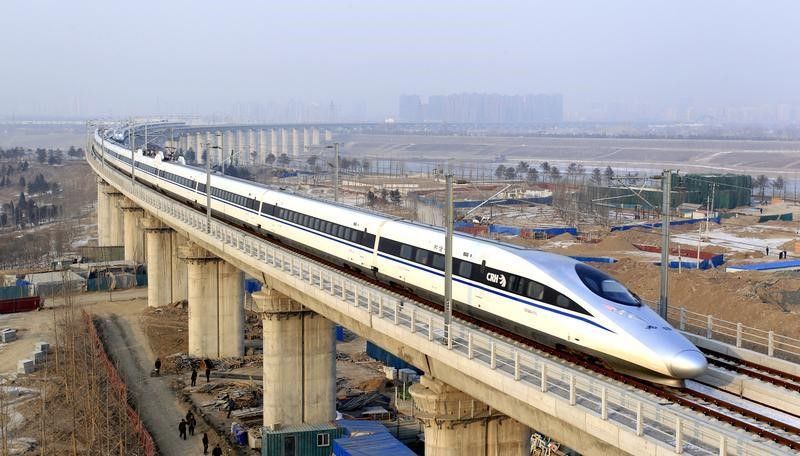Shanghai, July 20, 2016: Four years after it started operations, the high-speed rail link connecting China’s political capital of Beijing to the commercial capital of Shanghai became profitable for the first time.
Opened to the public in July 2011, the 1,300-kilometer, or 810-mile, Beijing-Shanghai high-speed rail line has been the busiest in China’s high-speed rail system. In 2015 nearly 130 million passengers, equivalent to a tenth of the country’s population, took the bullet train between Beijing and Shanghai. Just few days after opening, the top speed on the line slowed to 300 kilometers per hour from 350 km per hour, following a fatal crash involving two high-speed trains in the southern Chinese city of Wenzhou. The journey now takes between five and six hours, depending on the number of stops.
The link’s biggest shareholder, China Railways Corp., has never released the financial performance of the line, which cost $33 billion to build. Recently, a bond prospectus issued by a minor shareholder offered a glimpse into the rail link’s financial performance.
According to Tianjin Railway Construction & Investment Holding (Group) Co., a regional railway builder, the Beijing-Shanghai high-speed rail link last year recorded a net profit of 6.6 billion yuan, or about $1 billion. It’s the first time it made a profit, said Tianjin Railway, which owns a 4.5% stake in the link. Chinese state media has often touted the line as the most profitable high-speed rail route in the world.
It sounds like good news for China’s policymakers, who have been highly dependent on infrastructure investment to drive growth. Beijing is also touting its high-speed-rail technology overseas, as part of its effort to export more high-value and sophisticated products, though the push has met setbacks in the U.S. and Mexico.
China began building the high-speed railway system in earnest more than a decade ago. It now totals 19,000 kilometers, linking all cities which have a population greater than 500,000 people. The government aims to extend the system to 30,000 kilometers by 2020. Local politicians saw a winner and proposed to build their own high-speed branch lines to connect outlying cities.
However, rapid expansion has brought mounting debt at the railway department, raising concerns about its long-term health.
China Railway Corp., the national railway operator which was overhauled from the former Ministry of Railways, said in May its debt had exceeded four trillion yuan by the first quarter of this year, almost twice as much debt as the Greek government has. In 2015, the company paid about 78 billion yuan in interest expenses, though still notched a net profit for the year of 680 million yuan.
Vast spending on rail projects continues, ballooning from 155 billion yuan in 2006 to more than 800 billion yuan last year, government data show. The government has budgeted 800 billion yuan for railway construction this year.







